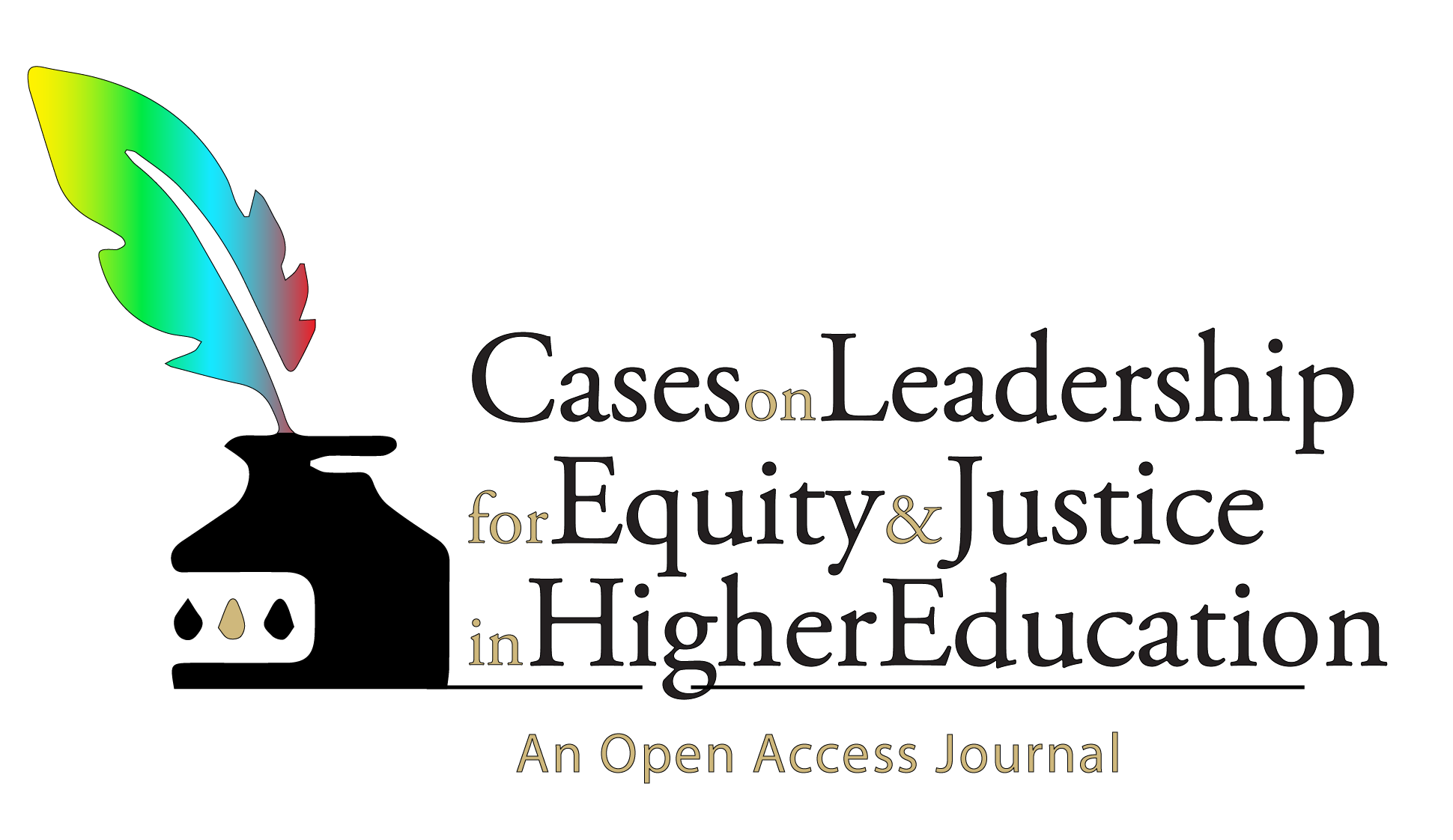Cases on Leadership for Equity and Justice in Higher Education is an open-access, peer-reviewed journal that welcomes submissions for higher education case studies through a lens of equity and social justice. The journal strives to publish timely and highly relevant cases that involve and address significant puzzles of practice facing leaders at all levels in higher education. While not its only purpose, the journal is intended to be an accessible place for emerging scholars to experience publishing in peer review sources.
Please note, while the journal seeks to publish cases to support leadership education and preparation, it does not publish original research, opinion or advocacy pieces, literature reviews, or other materials more typically the foci of traditional journals.
Schedule
Volume 2023
- We are now accepting submissions for Volume 2023
Review Process
Cases submitted for consideration will undergo a brief internal review by the journal editors to determine appropriateness concerning content and structure. Case study manuscripts that are deemed appropriate will be subject to double-blind peer review. Reviewers may return manuscripts to authors for edits to enhance clarity as required.
Cases are reviewed with the following criteria in mind:
- Significant: The case should center on a significant professional leadership dilemma for which there are no obvious or unequivocal solutions.
- Timely: Cases should focus on an issue or problem that is of current interest and importance to the field. It is appropriate for authors to situate their submissions in time and refer to events, changes, or shifts in the environment (e.g., changes in national policy) that enrich the case’s import.
- Complex: The best cases are significantly complex to suggest multiple pathways and alternative strategies, but not so complex as to be indecipherable or implausible. They pose a conundrum or puzzle that is ambiguous in nature; framing the problem is part of the work of the reader. Problems often have multiple and hidden layers and actions suggesting unintended consequences.
- Contextually appropriate: While all cases must be relevant to or situated within higher education organizations or related policy settings (e.g., a state department of higher education), ideally cases can be differentially applied to multiple contexts (e.g., two- and four-year colleges).
- Grounded: While ideally, cases do not name specific frameworks or perspectives for analysis, the best cases can be framed and understood using current and research-supported perspectives that can and should be named in teaching notes for potential users of the case.
- Clear/accessible: Cases must be well written and clearly communicate in a fashion appropriate for the intended audience, i.e., students and leaders in higher education. Relevant jargon suitable to the audience is unavoidable, but should be used sparingly when feasible, and may be defined within the case narrative to optimize usability.
Preparation of Manuscripts
Preparation of manuscripts in accordance with the formatting instructions that follow will facilitate the review and publication process. Cases should follow APA seventh edition guidelines for a professional paper and be submitted electronically as Word or Google documents with two separate components:
- A cover page should include the case’s title, the author(s)’ names and institutional affiliations, and an abstract of no more than 200 words, single-spaced.
- MAIN DOCUMENT: The main document should have all identifying information removed (no names or information that might reveal identities or affiliations). The recommended length of the combined cases, teaching notes, and references are between 15-20 double-spaced pages or no more than 5000 words. Manuscripts should be prepared using 12-point, times new roman font, and separate sections should include the following:
- title;
- case narrative;
- teaching notes that situate the case in relevant literature that can be used by instructors to process the case;
- sample teaching activities and/or discussion questions [preferable but not required];
- references conforming to the style presented in the seventh edition of the Publication Manual of the American Psychological Association; and
- if used, tables and figures can be embedded in the text of the case and should conform to the seventh edition of the Publication Manual of the American Psychological Association.
Submit a Manuscript
Please submit manuscripts in Word (.docx) or Google Docs format using the above preparation guidelines to CLEJHE@ucdenver.edu.
Include the following information in the body of the email:
- If there are multiple authors, clearly designate one as the corresponding author to whom journal editors will communicate and include an email address for this person; and
- Names of Authors in preferred publication order.
Please note that by submitting a manuscript for review, all authors affirm that they wish their case to be published in an open-access journal and make the case available for use, free of charge, in perpetuity; and that their cases are original work that has not been published elsewhere. It is the submitting author’s responsibility to ensure all authors consent to submitting the case for publication.
Creative Commons
The license being used for this publication is CC-BY-NC-SA.

CC BY-NC-SA allows users to distribute, remix, adapt, and build upon the material in any medium or format for non-commercial purposes only, and only so long as attribution is given to the creator. If you remix, adapt, or build upon the material, you must license the modified material under identical terms.
CC BY-NC-SA includes the following elements:
- BY – Credit must be given to the creator
- NC – Only noncommercial uses of the work are permitted
- SA – Adaptations must be shared under the same terms
